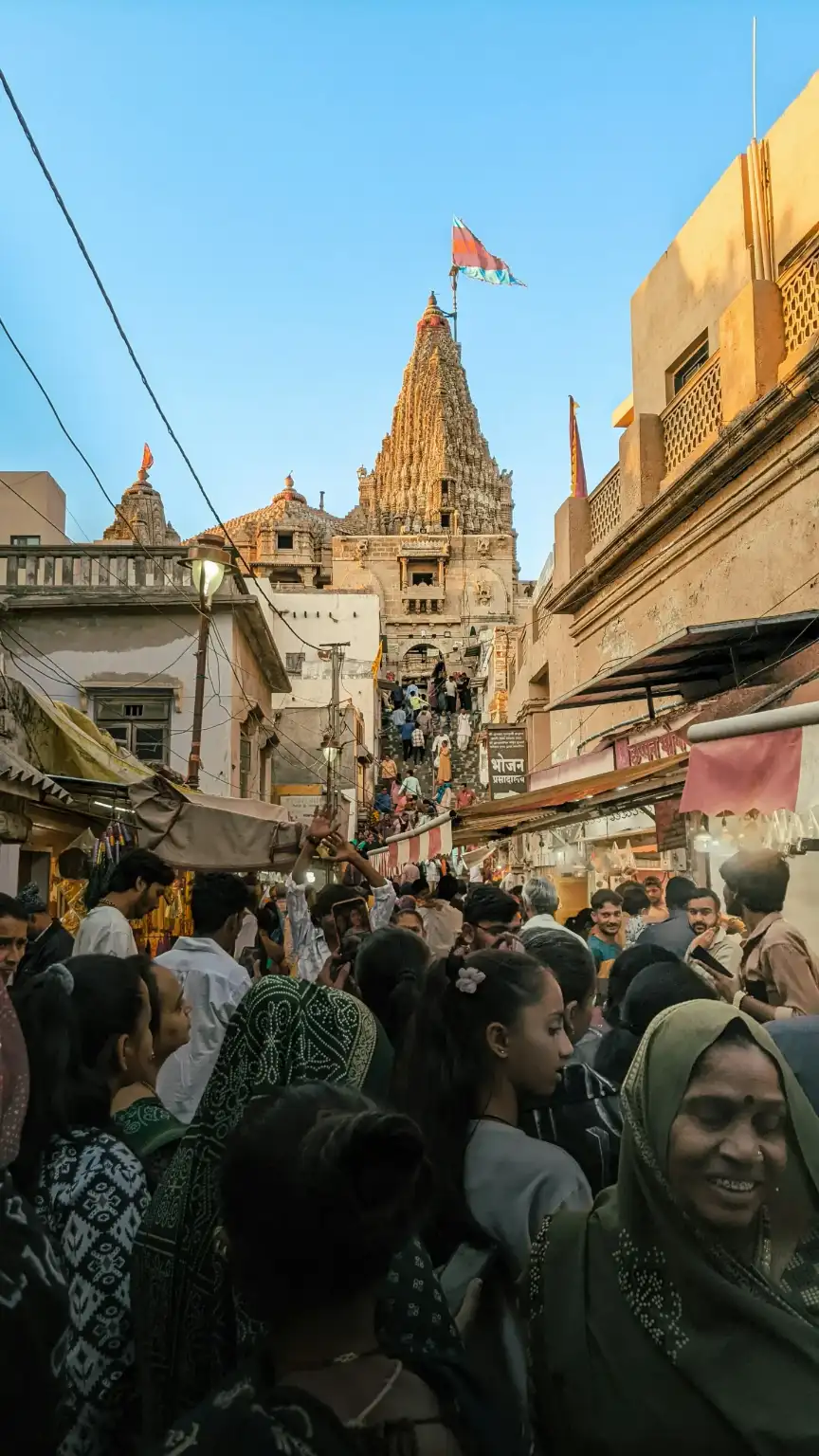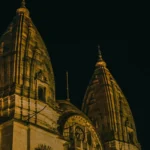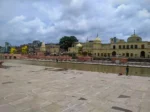Jyotirlingas in Maharashtra, India: The Divine Abode of Lord Shiva
India is a land deeply rooted in spirituality and mythology, with temples that narrate ancient tales of divinity and devotion. Among the most revered pilgrimage sites for Hindus are the Jyotirlingas, sacred shrines dedicated to Lord Shiva. Maharashtra, known for its rich cultural heritage and devotion to Lord Shiva, houses some of the most famous Jyotirlingas in the country. These temples are not only places of worship but also represent the spiritual heart of Maharashtra.
In this comprehensive guide, brought to you by Antriksh Travel, discover the sacred Jyotirlingas of Maharashtra, their history, significance, and why every devotee should visit them at least once in their lifetime.
What is a Jyotirlinga?
The term Jyotirlinga comes from two Sanskrit words: “Jyoti” meaning light or radiance, and “Linga,” which symbolizes Lord Shiva. Jyotirlingas are shrines where Lord Shiva is worshipped in the form of a fiery column of light. According to ancient Hindu scriptures, there are 12 traditional Jyotirlingas scattered across India, each with a unique legend and divine significance.
Devotees believe that visiting these Jyotirlingas cleanses the soul and bestows blessings, peace, and spiritual upliftment.
Jyotirlingas in Maharashtra: An Overview
Maharashtra is home to four of the twelve revered Jyotirlinga temples:
Trimbakeshwar Jyotirlinga (Nashik)
Grishneshwar Jyotirlinga (Aurangabad)
Bhimashankar Jyotirlinga (Pune district)
Aundha Nagnath Jyotirlinga (Hingoli district)
Each temple carries its own mythological importance and attracts millions of pilgrims and tourists annually.
1. Trimbakeshwar Jyotirlinga — The Source of the Godavari River
Located near Nashik, the holy city known for the Kumbh Mela, Trimbakeshwar Jyotirlinga is one of the most sacred Jyotirlingas in India. Nestled at the base of the Brahmagiri hills, this temple is unique for housing three lingas representing Lord Brahma, Vishnu, and Shiva.
Historical and Spiritual Significance
Legend says Lord Shiva appeared here as a fiery pillar of light and blessed the region. The temple is also associated with the origin of the Godavari River, the longest river in peninsular India, considered the lifeline of Maharashtra.
Trimbakeshwar is famous for its intricate architecture, especially the Marathi-style temple design and a gold-plated dome.
Visiting Trimbakeshwar
The temple complex includes sacred ponds and is surrounded by serene hills, making it a peaceful spot for pilgrims. Devotees visit throughout the year, but the Maha Shivaratri festival is a major event attracting thousands of visitors.
Nearby, the Brahmagiri hills offer trekking opportunities, and Nashik’s vibrant culture enhances the spiritual journey.
2. Grishneshwar Jyotirlinga — The Last Jyotirlinga in India
Located near the historic city of Aurangabad, Grishneshwar Jyotirlinga is the smallest but one of the most revered Jyotirlingas. It is situated close to the famous Ajanta and Ellora caves, a UNESCO World Heritage Site.
Legend and Importance
According to mythology, Grishneshwar was established by a devoted woman named Kusuma, who prayed to Lord Shiva with immense faith. Pleased with her devotion, Shiva appeared here as Grishneshwar, blessing her and the region.
The temple seen today was rebuilt in the 18th century and reflects beautiful Maratha architecture.
Attractions Around Grishneshwar
Tourists often combine their visit to Grishneshwar Jyotirlinga with excursions to Ajanta and Ellora caves, known for their ancient rock-cut architecture and stunning murals.
The temple itself is surrounded by lush greenery and offers a tranquil ambiance for worship and meditation.
3. Bhimashankar Jyotirlinga — The Source of the Bhima River
Situated in the Western Ghats near Pune, Bhimashankar Jyotirlinga is not only a holy shrine but also a natural paradise with abundant flora and fauna. The temple is located in a dense forest area and is famous for its stunning natural beauty.
Mythological Story
Bhimashankar is associated with the legend of Lord Shiva slaying the demon Tripurasura. It is believed that Shiva manifested here as a Jyotirlinga to destroy evil forces, making it a powerful symbol of divine energy.
Ecological Importance
Bhimashankar is surrounded by a wildlife sanctuary, home to the endangered Indian Giant Squirrel and many other species, making it a must-visit for nature lovers as well.
The temple architecture is traditional, with a sanctum sanctorum housing the Shiva lingam, which is believed to change color thrice a day.
4. Aundha Nagnath Jyotirlinga — The Oldest Temple in Maharashtra
Located in the Hingoli district, Aundha Nagnath Jyotirlinga is the oldest among the Jyotirlingas in Maharashtra. This temple is famous for its ancient Hemadpanti style of architecture dating back to the 13th century.
Spiritual Relevance
Aundha Nagnath is one of the twelve Jyotirlingas and is revered for its association with Lord Shiva, who is believed to have manifested here to protect devotees from evil.
The temple also hosts the annual Mahashivratri Mela, drawing large crowds for celebrations.
Architectural Highlights
The temple features intricately carved pillars, sculpted walls, and a beautifully designed sanctum. The serene surroundings add to the spiritual atmosphere, making it an ideal place for devotees seeking solace and blessings.
Other Important Shiva Temples in Maharashtra
Apart from the Jyotirlingas, Maharashtra is dotted with many other famous Shiva temples worth visiting, including:
Khandoba Temple, Jejuri: Known for its vibrant festivals and cultural significance.
Siddhivinayak Temple, Mumbai: Though dedicated to Lord Ganesha, it is often visited alongside Shiva temples in the region.
Trimbak Ganapati Temple, Nashik: Another significant temple near Trimbakeshwar.
Best Time to Visit Jyotirlingas in Maharashtra
The ideal time to visit these Jyotirlingas is during the winter months from October to March, when the weather is pleasant and favorable for travel. However, many pilgrims prefer to visit during Maha Shivaratri, an auspicious festival celebrated with great enthusiasm at all Jyotirlinga temples.
How to Reach Jyotirlinga Temples in Maharashtra
By Air: The nearest airports are Mumbai, Pune, and Aurangabad, well connected to major Indian cities.
By Train: Nashik Road Railway Station, Aurangabad Railway Station, and Pune Railway Station serve as convenient access points.
By Road: Maharashtra’s extensive road network links all Jyotirlinga sites, with state buses and taxis available for local travel.
Why Visit Jyotirlingas in Maharashtra with Antriksh Travel?
Antriksh Travel offers expertly crafted Jyotirlinga pilgrimage packages across Maharashtra that combine spiritual visits with comfortable accommodations and seamless travel arrangements. Whether you want a quick trip to one Jyotirlinga or a complete tour of all four, our customized packages ensure a memorable and hassle-free pilgrimage experience.
Spiritual Benefits of Visiting Jyotirlingas
Visiting the Jyotirlinga temples is believed to cleanse the soul and bring peace, prosperity, and spiritual awakening. Each temple is said to grant special blessings related to health, family welfare, and spiritual growth.
Conclusion
The Jyotirlingas in Maharashtra represent the essence of Lord Shiva’s divine power and form an integral part of India’s spiritual heritage. Whether you are a devout follower or a curious traveler, exploring these sacred temples offers a unique glimpse into ancient legends, architecture, and devotional practices.
Plan your Jyotirlinga tour in Maharashtra with Antriksh Travel and immerse yourself in a spiritual journey that promises peace, enlightenment, and a connection with the divine.




